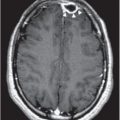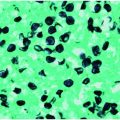| Disease | Causative agent | Geographic distribution | Vector | Reservoir |
|---|---|---|---|---|
| American trypanosomiasis (Chagas disease) | Trypanosoma cruzi | Americas | Triatomine (Reduviid) bugs; occasionally infected juices or foods | Multiple species of animals |
| African trypanosomiasis (sleeping sickness) | Trypanosoma brucei gambiense | West and Central Africa | Tsetse flies (Glossina species) | Humans, domestic animals (minor role) |
| Trypanosoma brucei rhodesiense | East Africa | Large game animals | ||
| Leishmaniasis (visceral, cutaneous, mucosal) | Leishmania species | Worldwide | Sand flies (Phlebotomus species and Lutzomyia species) | Rodents, canines (dogs, foxes), or humans |
Despite several important recent advances, the treatment of Chagas disease, African trypanosomiasis, and leishmaniasis leaves much to be desired. Many of the drugs (Table 202.2) used for them are associated with frequent and potentially severe untoward effects, some require parenteral administration, and many must be administered over prolonged periods of time. The only drugs approved by the US Food and Drug Administration (FDA) for these diseases are liposomal amphotericin B for visceral leishmaniasis and miltefosine for visceral and cutaneous leishmaniasis. Other drugs listed in the table are investigational or used off-label. Several can be obtained from the Centers for Disease Control and Prevention (CDC) Drug Service (Atlanta, Georgia) along with detailed information about administration and side effects and administered under an Investigational New Drug (IND) protocol. The high cost of some of these medications and the lack of availability of others are important determinants in therapeutic decisions in impoverished endemic areas. Hopefully, more effective, less toxic approaches to chemotherapy and/or protective vaccines will become available in the future.
| Drug of choice | Adult dosage | Pediatric dosage |
|---|---|---|
| American trypanosomiasis/Chagas disease (Trypanosoma cruzi) | ||
| Nifurtimoxa,b Or Benznidazolea,b | 8–10 mg/kg/d in 3–4 doses × 90 d 5–7 mg/kg/d in 2 divided doses × 60 d | 1–10 yr : 15–20 mg/kg/d in 3–4 doses × 90 d 11–16 yr: 12.5–15 mg/kg/d in 3–4 doses × 90 d ≥17 yr: same as adult dose × 90 d <12 yr: 5–7.5 mg/kg/d in 2 doses × 60 d ≥12 yr: 5–7 mg/kg/d in 2 doses × 60 d |
| East African sleeping sickness (Trypanosoma brucei rhodesiense) | ||
| Hemolymphatic stage Suramina,b | 100 mg (test dose) IV, then 1 g IV on days 1,3,5,14, and 21 | 100 mg (test dose), then 20 mg/kg (max 1 g) on days 1,3,5,14, and 21 |
| Late stage with central nervous system involvement | ||
| Melarsoprola,b,c | 2–3–6 mg/kg/d × 3 d; after 7 d 3.6 mg/kg/d × 3 d; repeat again after 7 d | 2–3.6 mg/kg/d × 3 d; after 7 d 3.6 mg/kg/d × 3 d; repeat again after 7 d |
| West African sleeping sickness (Trypanosoma brucei gambiense) | ||
| Hemolymphatic stage | ||
| Pentamidined,e | 4 mg/kg/d IM or IV × 7–10 d | 4 mg/kg/d IM or IV × 7–10 d |
| Alternative: Suramina | 100 mg (test dose) IV, then 1 g IV on days 1,3,5,14, and 21 | 100 mg (test dose) IV, then 20 mg/kg/d (max 1 g) on days 1,3,5,14, and 21 |
| Late stage with central nervous system involvement | ||
| Eflornithinea,f | 400 mg/kg/d IV in 4 doses × 14 d | 400 mg/kg/d IV in 4 doses × 14 d |
| Leishmaniasis (Leishmania species) | ||
| Visceralg | ||
| Liposomal amphotericin Bh,i | 3 mg/kg IV (d 1–5, 14, and 21) | 3 mg/kg IV (d 1–5, 14, and 21) |
| Alternatives | ||
| Sodium stibogluconatea | 20 mg sb/kg/d IV or IM × 28 dj | 20 mg sb/kg/d IV or IM × 28 dj |
| Or | ||
| Meglumine antimonatea | 20 mg sb/kg/d IV or IM × 28 dj | 20 mg sb/kg/d IV or IM × 28 dj |
| Or | ||
| Miltefosinek | 50 mg PO TID × 28 d | ≥12 yr and 30–44 kg: 50 mg PO BID × 28 d≥45 kg: same as adult dose × 28 d |
| Or | ||
| Amphotericin Bd | 0.5–1 mg/kg IV daily or every second day for a total dose of 15–20 mg/kg | 1 mg/kg IV daily or every second day for a total dose of 15–20 mg/kg |
| Cutaneousl | ||
| Local therapy: Systemic therapy: Sodium stibogluconatea | Cryotherapy (with liquid nitrogen) Thermotherapy (use of localized current field radiofrequency heat) Intralesional administration of SbV (not covered by CDC’s protocol for Pentostam) Application of paromomycin (as an ointment containing 15% paromomycin; not commercially available in the United States)m Application of imiquimod 20 mg sb/kg/d IV or IM × 20 dh | 20 mg sb/kg/d IV or IM × 20 dj |
| Or | ||
| Meglumine antimonatea Or Liposomal amphotericin Or Amphotericin B deoxycholated Or | 20 mg sb/kg/d IV or IM × 20 dj 3 mg/kg/d IV for 6–10 doses 0.5–1.0 mg/kg daily or every other day for a total dose of approx. 20 mg/kg | 20 mg sb/kg/d IV or IM × 20 dj 3 mg/kg/d IV for 6–10 doses 0.5–1.0 mg/kg daily; or every other day for a total dose of approx. 20 mg/kg |
| Miltefosinen | 50 mg PO TID × 28 d | ≥12 yr and 30–44 kg: 50 mg PO BID × 28 d≥45 kg: same as adult dose × 28 d |
| Or | ||
| Fluconazoled,o | 8 mg/kg/d PO for 4–6 wk | 8 mg/kg/d PO for 4–6 wk |
| Mucosalp | ||
| Sodium stibogluconatea | 20 mg sb/kg/d IV or IM × 28 dj | 20 mg sb/kg/d IV or IM × 28 dj |
| Or | ||
| Meglumine antimonatea | 20 mg sb/kg/d IV or IM × 28 dj | 20 mg sb/kg/d IV or IM × 28 dj |
| Or | ||
| Amphotericin Bd Or Liposomal amphotericind Or Miltefosineq | 0.5–1 mg/kg IV daily or every second day for up to 8 wk 3 mg/kg daily or every other day for a dose of 35 mg/kg 50 mg PO TID × 28 d | 0.5–1 mg/kg IV daily or every second day for up to 8 wk for cumulative dose of 20–45 mg/kg 3 mg/daily or every other day for a dose of 35 mg/kg ≥12 yr and 30–44 kg: 50 mg PO BID × 28 d≥45 kg: same as adult dose × 28 d |
a Based on the recommendations of the Centers for Disease Control and Prevention, 2013 and the Medical Letter for Drugs and Therapeutics, 2008
b Available under an Investigational New Drug (IND) protocol from the CDC Drug Service, Centers for Disease Control and Prevention, Atlanta, GA 30333; 404–639–3670 (evenings, weekends, or holidays: 404–639–2888).
c In frail patients, begin with as little as 18 mg and increase the dose progressively. Pretreatment with suramin has been advocated for debilitated patients. Corticosteroids have been used to prevent arsenical encephalopathy. Up to 20% of patients with T. b. gambiense fail to respond to melarsoprol.
d An approved drug, but considered investigational for this condition by the FDA.
e For treatment of T. b. gambiense, pentamidine and suramin have equal efficacy, but pentamidine is better tolerated.
f Eflornithine is highly effective in T. b. gambiense but not against T. b. rhodesiense infections. It is available in limited supply only from the World Health Organization (WHO) and the CDC.
g Visceral infection is most commonly caused by Leishmania donovani and Leishmania infantum (previously known as Leishmania chagasi in Latin America). Treatment may vary based on symptoms, host immune status, species, and resistance pattern in the area where infection was acquired.
h Several lipid formulations of amphotericin B have been used for treatment of visceral leishmaniasis. Largely based on clinical trials in patients infected with L. infantum, the FDA approved liposomal amphotericin B (AmBisome) for treatment of visceral leishmaniasis. Amphotericin B lipid complex (Abelcet) and amphotericin B cholesteryl sulfate (Amphotec) are considered investigational.
i The FDA-approved dosage regimen for immunocompromised patients (e.g., HIV infected) is 4 mg/kg/d (d 1–5) and 4 mg/kg/d on d 10, 17, 24, 31, and 38. The relapse rate is high; maintenance therapy may be indicated, but there is no consensus as to dosage or duration.
j May be repeated or continued; a longer duration or higher dose may be needed for some patients treated with liposomal amphotericin.
k Gastrointestinal adverse effects are common, and the drug is contraindicated in pregnancy and breastfeeding. Resistance has been reported. Miltefosine is approved for L. donovani infection acquired in the Indian subcontinent.
Stay updated, free articles. Join our Telegram channel

Full access? Get Clinical Tree





